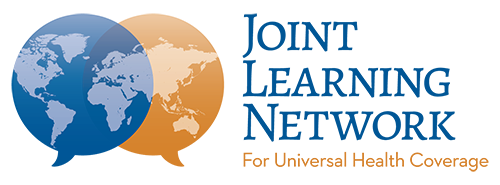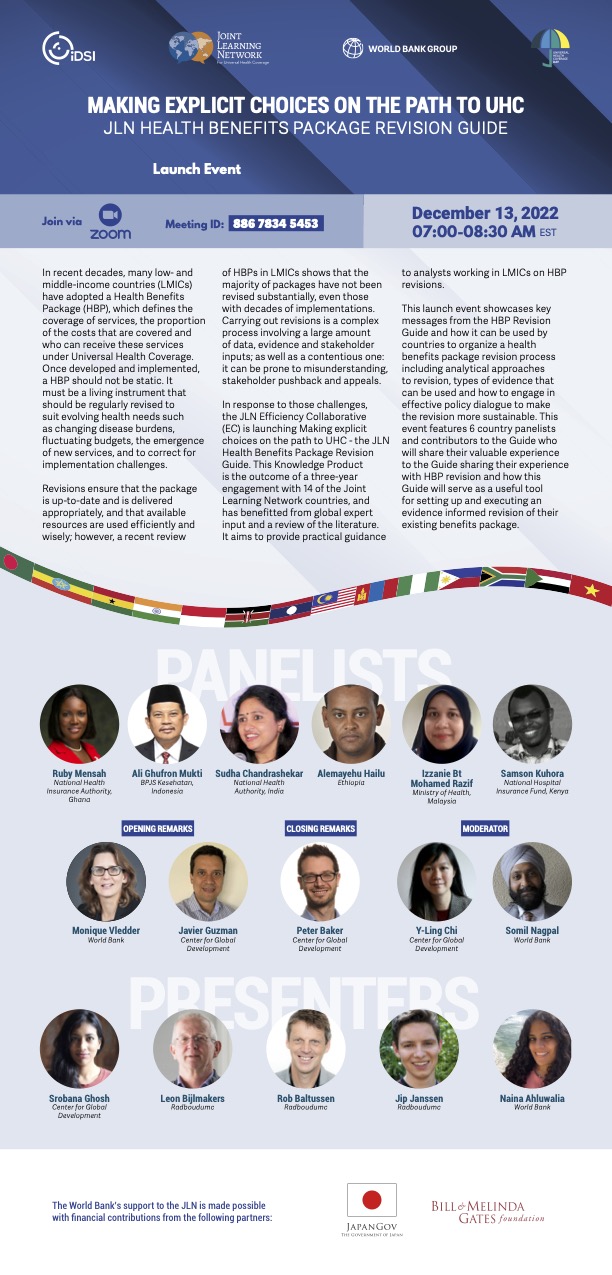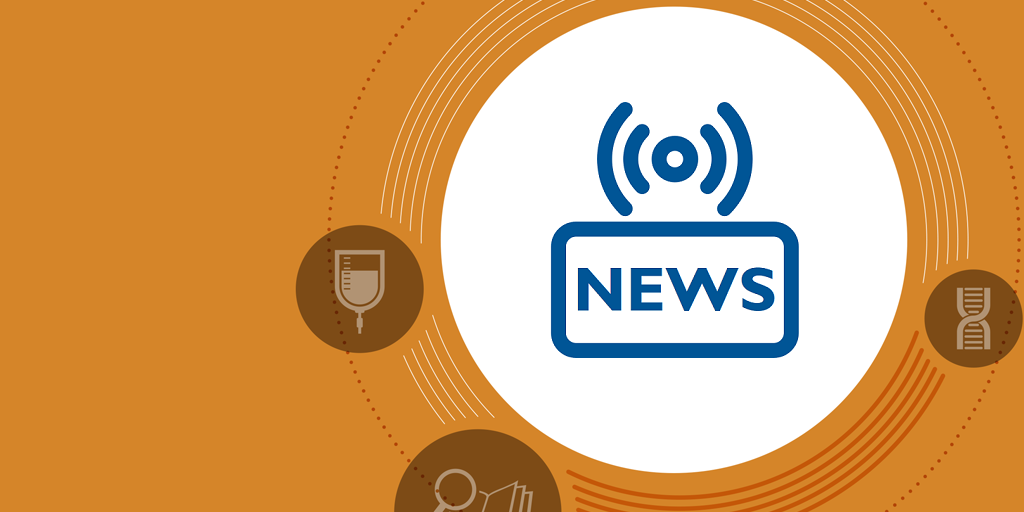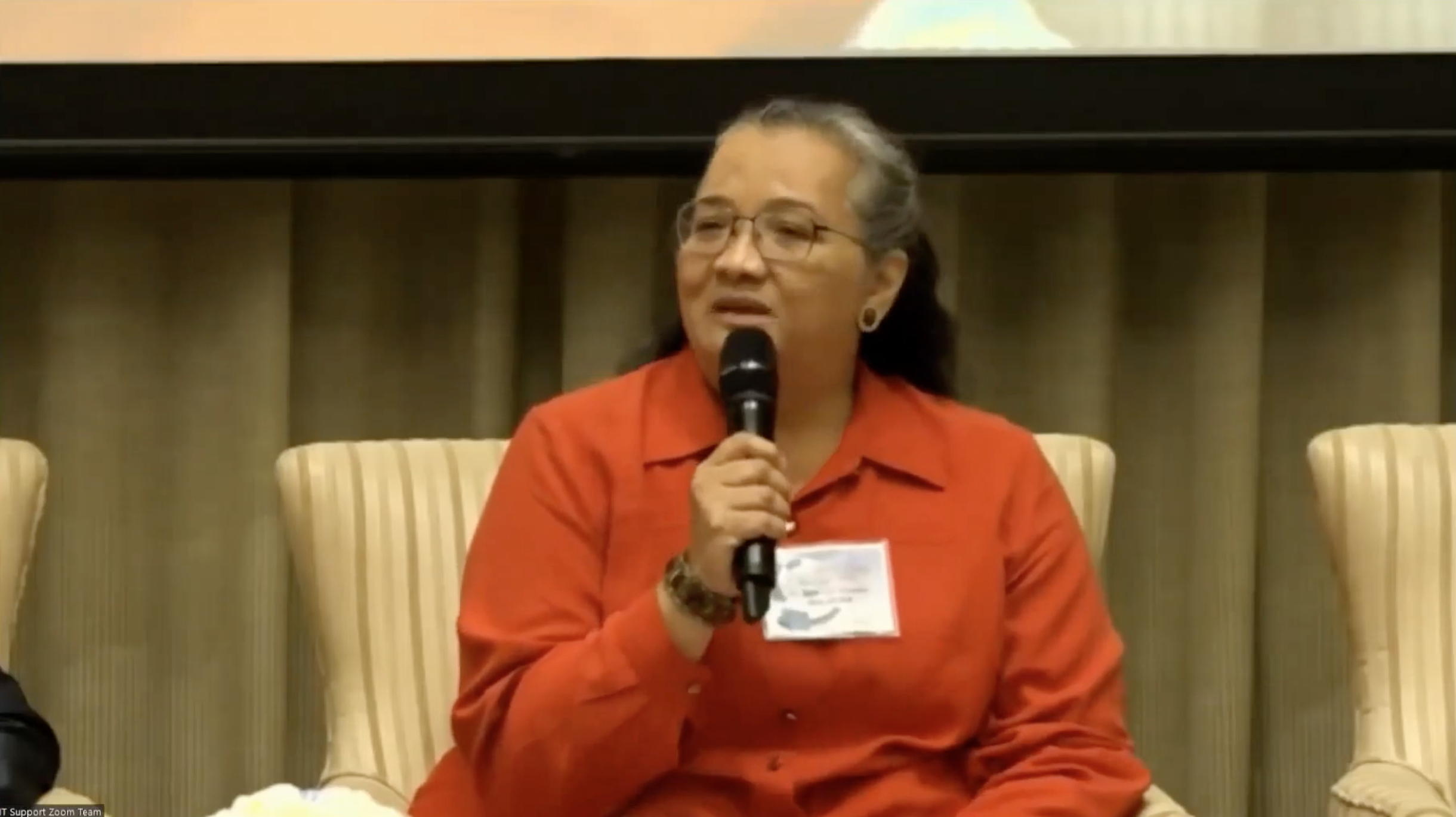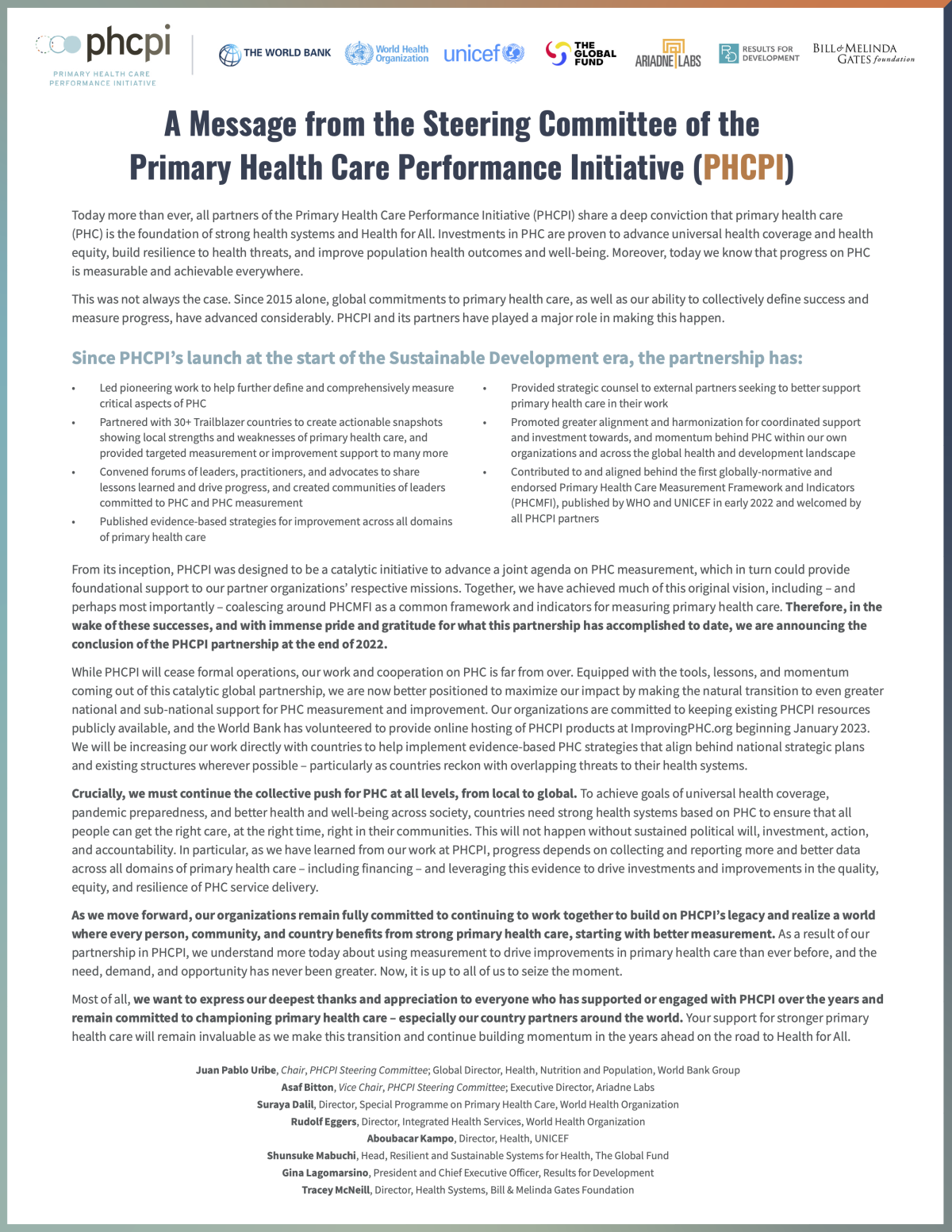In 2016, the Joint Learning Network for UHC under the Primary Health Care (PHC) Technical Initiative brought together practitioners that formed the Health Benefits Policy (HBP) Collaborative. This collaborative consisted of experience sharing and compilation of practical advice among six low-and-middle-income countries: Indonesia, Kenya, Malaysia, Mali, Morocco, and Vietnam. Each of them conducted an assessment to evaluate their efforts in implementing new or revised benefit packages using the PHC Health Benefit Framework (HBF), a knowledge product that was developed from the collaborative. Kenya participated by sharing experience from a sub-national level, namely Makueni County, which is one of the 47 sub-national governments of the country. Makueni County established the MakueniCare UHC Programme in 2016 with an effort to provide coverage for the county residents. To access the programme, the registration fee per household was Ksh 1000 (USD 8.60) annually to cover the principal, spouse and five dependents below 18 years of age. The members can access services at level 5 and 4 county health facilities. The programme runs complementary to other health programs such as the program for free PHC implemented by the national government and the National Health Insurance Fund (NHIF), which is to be accessed as a last resort. The benefit package consists of the extent of the services available at the county health facilities and services covered/not covered in the complementary programmes. The services include inpatient, outpatient, and mortuary service with exemption of auxiliary devices and cost of surgical implants; forensic services; specialized services e.g., CT scanning, surgical implants, intensive care unit services, dialysis, non-routines medical reports, professional fees for autopsies/postmortems, medical reports and other related services, and referrals to outside the County. Five years later in 2022, the JLN Kenya Country Core Group (CCG) with support from JICA and working with Makueni County Department for Health in the course of 3 months used the HBF to assess MakueniCare Programme, to check on the progress towards providing UHC to the residents of the County, and to inform the Kenya country JLN chapter on key areas on which to focus as the team plans to launch a sub-national JLN chapter. See the table below for the outcomes of the programme assessment based on the six policy domains from the HBF: Policy Domain Domain Definition Findings Financing: Mobilizing and Pooling Resources The strategy for pooling resources that finance service delivery. Sources of health financing: County Government – budgetary allocation to health (28 -33% of Total County Budget) and MakueniCare reimbursement User fees collected at facility (FIF)- cash payments, NHIF reimbursement, MakueniCare registration. Public health department levies Donor funding Conditional allocations and other loans and grants. Financing: Payment Mechanisms Provider payment mechanisms set up to incentivize providers to offer package services. Fee-for-service (FFS) – MakueniCare reimbursement but not shilling-for-shilling, as this depends on resource basket and the FIF retained at facility level. FFS for cash payment in out-of-pocket payments Capitation – NHIF reimbursements from various programs In-put based financing- staff salaries, procurement of commodities & general administrative costs. Staff incentives portion of the budget (15%). Supply Side Strengthening Government’s spending to improve provider capacity to deliver prioritized PHC services. Increase in health facilities from 109 in 2013 to 237 in 2022. Allocated 30% of its UHC budget to invest in facility infrastructure and staff training to deliver the full list of MakueniCare services. Additional 358 staff were hired through the national UHC program with contracting at facility level to meet their HRH needs. Investment in essential and specialized medical equipment and health infrastructure. Strengthening PHC through establishment of Primary Care Network (PCN) model. Upgrading of facilities to ensure access to services promised in the benefit package Plans for end-to-end hospital automation Development of a telecentre still pending due to funding. Supervisory support for facilities with low caseloads. Generating Demand The health system steward’s strategy for educating the public about services within the package and beneficiary enrollment. Voluntary enrollment at the point of service -Level 5 and 4 facilities with plans to decentralize to lower levels. Annual registration fee increased to Ksh. 1,000 (USD 8.59) (from Ksh 500 (USD 4.30)). Introduction of 14-days waiting period to address adverse selection. Increase in the workload of up to three time over Challenges of renewal rates- campaigns to commence aggressively beyond the health facilities. Protocols and Pathways The treatment protocols and referral pathways that are put in place to improve quality and efficiency of service delivery. The referral protocol in place for patient and specimen referral guided by the Kenya Health Sector Referral Implementation Guidelines, 2014. Centralized ambulance referral systems with call centre. Reverse referral for medical officers to busy health centres Challenge of patients bypassing PHC facilities to come to higher levels resulting in increased cost of service delivery, overload/underutilization of facilities and delayed care. Referral outside County facilities not covered by MakueniCare. There is a Citizen Service Charter that outlines guidelines for service delivery at the health facilities Accountability Mechanisms The regulatory framework for monitoring and evaluation systems that accompany the PHC benefits package UHC Policy has an implementation matrix and M&E framework with M&E done by the County M&E Directorate in collaboration with the Health Departmental M&E and also external M&E consultants. Within the Department of Health is the Directorate of Health Planning in charge of quarterly and annual M&E reports on implementation of the UHC Policy. At facility level, M&E function is assigned to the UHC committee that reports to the Hospital Management Team that reports to the County Steering Committee. Applies the Kenya Quality Model for Health: Checklist for Assessing Quality of Healthcare (KQMH)/ An established quarterly budgeting and reimbursement process with checks and balances at every stage. County & facility level Health Administrative Units have oversight on operations to ensure efficiency, quality, access, equity and affordability of services. Stakeholder participation in budgeting and development in the county. Program guided and monitored by the County Integrated Development Plan, Annual Progress Report, County Health Policy, and County UHC Policy. 100% banking of all cash collected at facility and also
